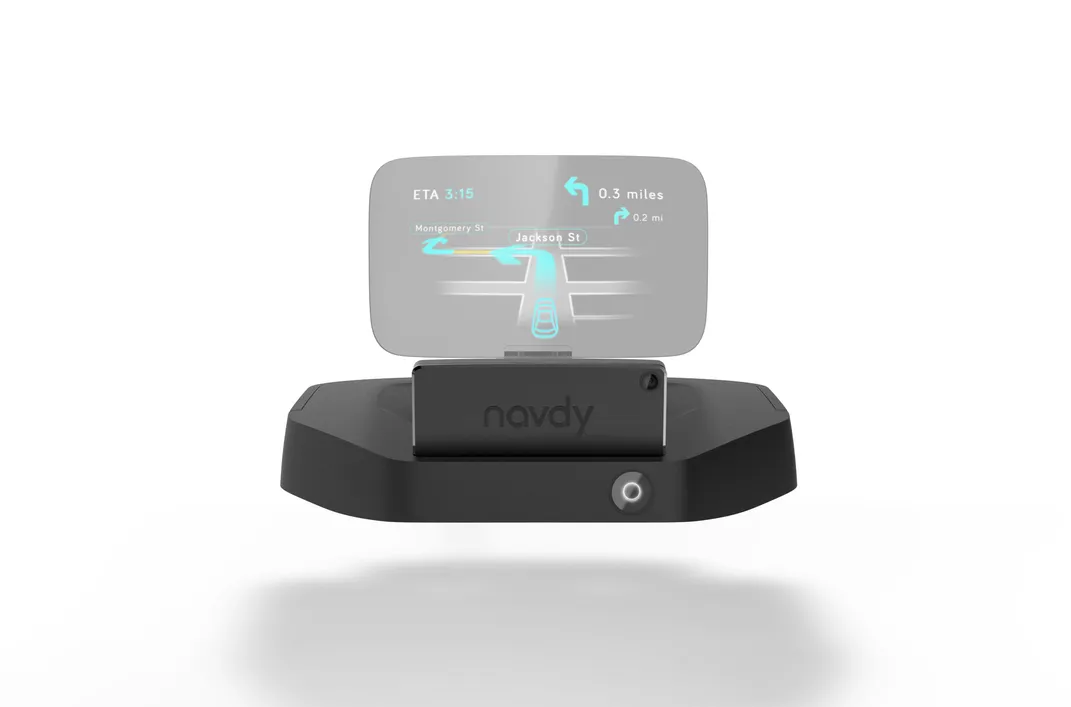Navdy Projects Apps and Text Messages Onto the Windshield of Almost Any Car
A California startup is launching a system that puts maps, texts and calls right at eye level
/https://tf-cmsv2-smithsonianmag-media.s3.amazonaws.com/filer/2a/bb/2abb750b-20dc-4c5f-aaf1-8f36d87cede9/text_message.jpg)
A recent University of Colorado study has brought into question whether or not California’s cell phone ban for drivers has had any significant impact on safety. The study, which compared the six months before the ban with the six months after, found no change in the number of accidents.
Some studies have corroborated the data—one based in New York also saw no significant change in accidents—but it directly contradicts other findings. Results published in the New England Journal of Medicine, for instance, showed that drivers who talk on the phone while driving are at four times the risk of an accident than those who do not. A Virginia Tech Transportation Institute study found that young drivers septuple their risk of accidents while dialing and quadruple it while texting.
So, we’re left with a discrepancy. We know that distracted driving is unsafe, yet laws designed to curb it don’t solve the problem. One reason the University of Colorado researchers posit for their results is simple: Drivers may have ignored the law altogether.
"Simply banning cell phone use seems to be unlikely to get any meaningful reduction in traffic accidents. It doesn't mean it's not a dangerous thing to do; it just means when you put the ban into the real world, the actual effectiveness of the ban looks to be much less than its hypothetical effectiveness," researcher Daniel Kaffine told Vox.
Still, at the end of the day, no one can argue the fact that it’s always a good idea for a driver to keep his or her eyes on the road. That’s the premise behind Navdy, a California startup out to put a head-up display (HUD) in every car. Its product, which is currently up for pre-order, puts navigation, messages, calls and more right where the driver is already looking.
The Navdy is a five-inch device composed of a low-power computer, high-resolution projector and a transparent display. Drivers sit the Navdy on their dashboard, connect it to the car’s OBD-II port (a power source and connection to the car’s diagnostics) and link it with their smartphone over Bluetooth.
Through the Navdy app, the system syncs with turn-by-turn navigation, phone calls, messaging, Twitter and music services like Pandora and Spotify. The projector shines onto the display, creating a prismatic effect that causes the image to appear as if it’s on a two-foot screen about six feet in front of the car. Images appear to float, similar to the way they do in other popular HUDs, such as Google Glass.

Drivers interact with Navdy through either voice or gestures. They can dictate texts and ask the system to embed information, such as their location, into messages. A small infrared camera faces the driver, which allows him or her to respond to calls or messages with simple one-handed gestures. A thumbs-up, for instance, answers an incoming call. Navdy’s software is context-aware, so it won’t misconstrue a driver waving to a friend as a gesture command.
The system doesn’t display the complete versions of apps, but rather pared-down versions that Navdy has approved for safety. The company plans to launch a software development kit so that third parties can also customize apps to the system.
An increased desire for safety has prompted many HUD developments of late. Some automakers, such as Mercedes and Mazda, have been integrating HUDs into dashboards at the factory, and a small handful of after-market systems are available as well. Garmin, for example, makes a smartphone-connected HUD, but it works with navigation only.
Navdy’s biggest competition, however, will be from smartphone-focused in-dash computers, such as those that use the new Apple CarPlay interface. CarPlay replaces an onboard computer with a driver’s iPhone. With the phone connected, select apps appear on the in-dash display and are reconfigured to be easier to navigate while driving. Apple currently has 31 partner automakers onboard.
In principle, CarPlay is a similar idea to Navdy—take the apps you know and make them less distracting on the road—but Navdy has a leg up in a couple ways. First, drivers can install it in virtually any late-model car. (OBD-II ports became mandatory in the late 1990s.) And, even more importantly, it puts all the information that would otherwise be stuck on an in-dash right at eye level.
Navdy pre-orders are currently underway for $300, but the price will jump to the final retail cost of $500 after Labor Day. The device goes on sale in early 2015.
/https://tf-cmsv2-smithsonianmag-media.s3.amazonaws.com/accounts/headshot/me.jpg)
/https://tf-cmsv2-smithsonianmag-media.s3.amazonaws.com/accounts/headshot/me.jpg)